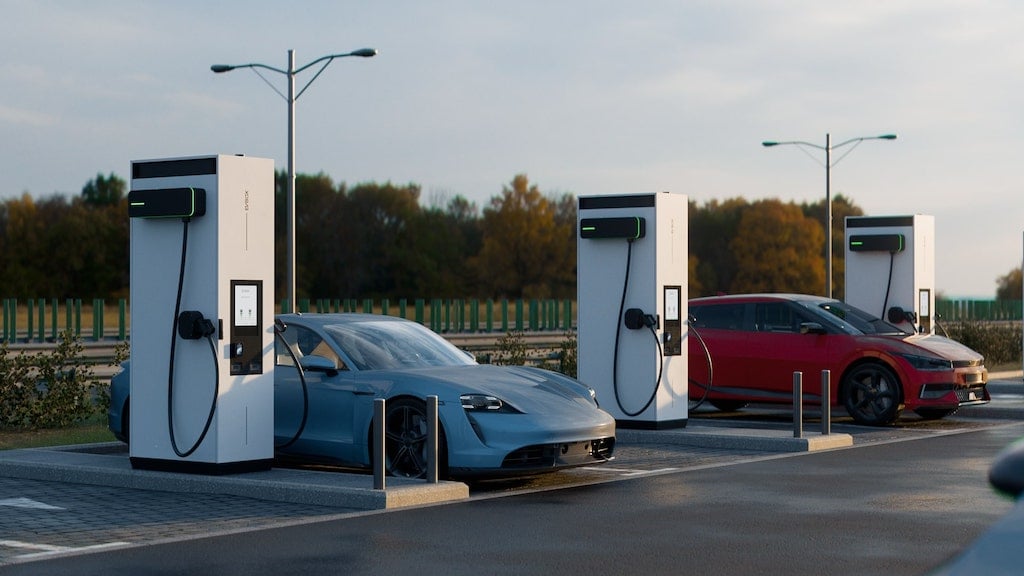
Last updated: 30 November 2023
DC charging stations allow businesses to provide fast charging to their customers, fleets, or employees and can be a great way to help make their business stand out and generate revenue.
Smart charging helps businesses make the most of their DC fast charging infrastructure, with features such as load balancing and simultaneous charging enabling maximum utilization while safeguarding your building’s electrical circuit.
Vehicle-to-grid (V2G) technology has the potential to unlock exciting opportunities for energy storage using EVs’ batteries and can be a valuable tool in supporting your business’ sustainability objectives and renewable energy transition in the future.
Table of contents
Charging possibilities have developed rapidly
Electric mobility has developed at a rapid pace over the last few years. At the same time, EV charging infrastructure has also evolved and is –just like the vehicles– a lot more than just a piece of hardware.
This is where smart charging comes in.
In this article, we’ll explain what smart EV charging is and what it means in relation to DC charging specifically.
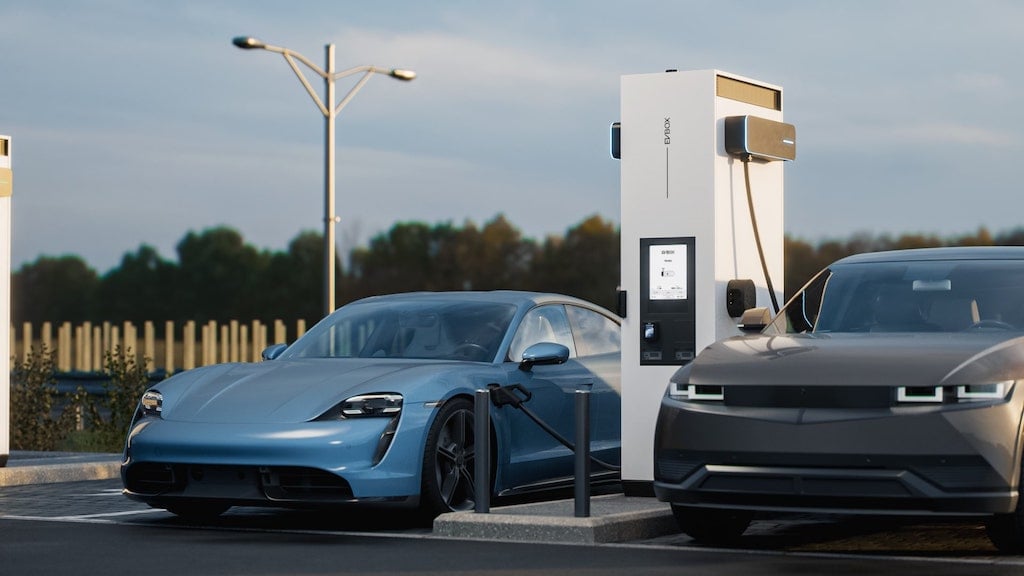
What is smart charging?
Smart charging (also called intelligent charging) is an umbrella term encompassing a range of features that optimize EV charging infrastructure and minimize the load impact (demand placed on your location’s electrical infrastructure) of EVs.
This can sound pretty complex. So, we asked our product manager and smart charging expert, Jelle van Doornik, what it all means in one of our REVOLUTION Podcast episodes.
“Smart charging is an umbrella term for many different features that all aim to influence the energy consumption of the vehicle. So, instead of just charging as fast as possible, the charging rate can be adapted based on different factors. That can be sustainability, costs, or dividing the energy over other vehicles or appliances that are there. Smart charging is all about dividing the electricity in the smartest way possible.” – Jelle van Doornik, Product Manager at EVBox.
So, essentially, smart charging aims to optimize the available energy at your location and can help you make the most of your DC fast charging infrastructure.
A (load) balancing act
One of the main challenges smart charging helps solve is balancing the power loads between individual charging stations and between your charging infrastructure and the rest of your location.
You might not realize it, but EV charging – especially DC fast charging – is incredibly power-intensive, which can strain your connection to the grid if not managed properly.
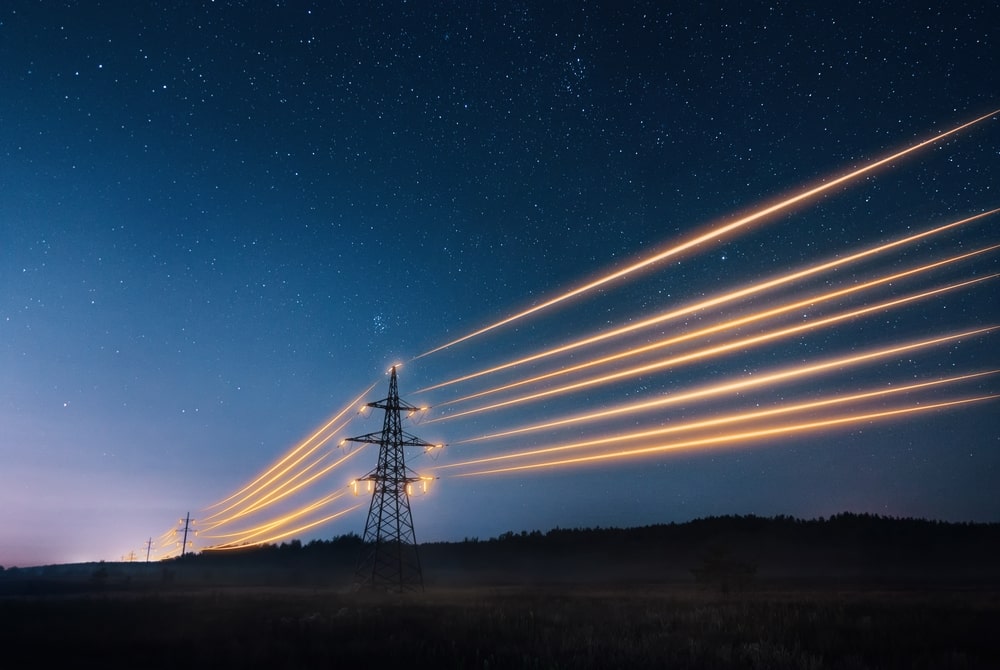
Load balancing can intelligently manage the power distribution between your DC fast charging stations, the grid, and your location. There are two main ways to categorize the distribution of power: cluster load balancing and dynamic load balancing.
Cluster load balancing
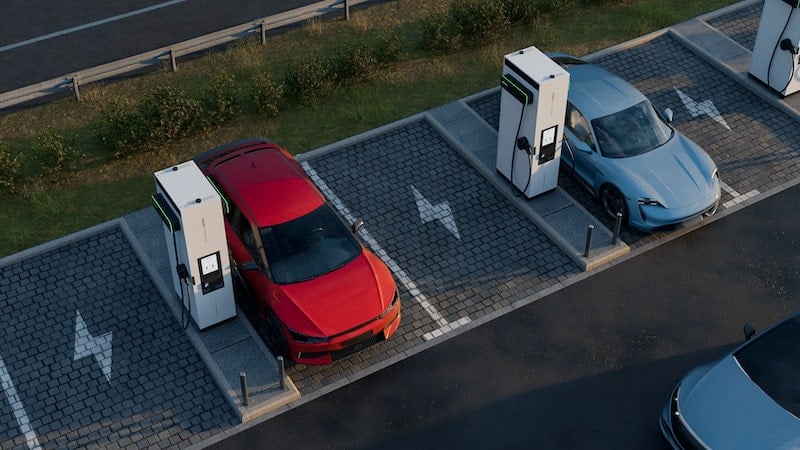 Cluster load balancing refers to power distribution between charging stations. Let’s take a look at how this works with a simplified example.
Cluster load balancing refers to power distribution between charging stations. Let’s take a look at how this works with a simplified example.
Let’s say you have a total power capacity of 300 kW available for fast charging at your location, and imagine having three DC charging stations installed with a maximum power output of 150 kW each. Now, if two out of three charging stations are in use, both have access to the maximum power output (150 +150 = 300).
But what happens if the third one is also used? You need 450 kW, you only have 300 kW. Without cluster load balancing, that station will not work.
Cluster load balancing will automatically lower the output of the other two charging stations, and divide the available power equally so that all three charging stations have access to 100kW of power (100 + 100 + 100 = 300).
Dynamic load balancing
Dynamic load balancing monitors changes in energy use on your circuit and allocates the available capacity to different appliances automatically.
Let’s use the same example as above, but now we include other appliances in your building. So, to keep the explanation clear let’s say you have heavy machinery that requires 100 kW to operate. Now imagine, turning it on while your charging stations are using all of the available power.
Without dynamic load balancing, the fuse would blow. This makes sense right? You need 400 kW, you only have 300 kW, you hit the switch, the circuit can’t handle the demand, and so everything stops.
With dynamic load balancing, the charging process is slowed (or temporarily stopped) to free up capacity for the other appliances.
Load balancing is crucial for managing a power connection and ensuring you get the most out of your building’s electrical infrastructure without ever overloading it.
Dynamic load balancing is also used for home charging stations. We've made a video to show how it works. While this video highlights a residential scenario, the same principle applies.
Simultaneous charging
Simultaneous charging is a smart charging feature that allows more than one car to charge at a single charging station at the same time. Simultaneous charging can automatically divide the available power output of a station between the vehicles that are plugged in.
This ensures that both cars are able to charge without exceeding the charging station’s maximum power output.
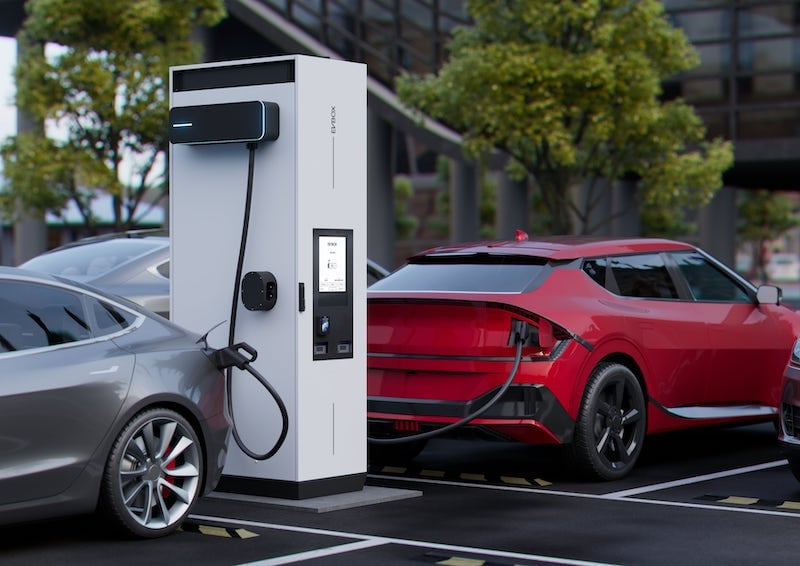 Let’s explain this with another simplified example.
Let’s explain this with another simplified example.
Imagine you only have one DC charging station with a maximum power output of 150 kW. If one car is plugged in, it has access to the full available power output of the station (depending on how much the car can handle). Let’s say this is 100 kW. If another similar car pulls up and plugs in the second cable, there is only 50 kW available.
However, with simultaneous charging, the station divides the available power between the two cars equally, meaning that both cars will have access to 75 kW each.
But there is more to it. What if one car can only take 50 kW and the other 100 kW? In that case, a charging station with a maximum power output of 150 kW, will deliver 100 kWh to one, and 50 kWh to the other, instead of splitting it in half unnecessarily.
Vehicle-to-grid (V2G) technology
As its name implies, vehicle-to-grid (V2G) technology allows bidirectional charging between an EV and the grid; in other words, it lets an EV’s battery act as a source of power for the grid. With this technology, an EV's battery can be charged and discharged based on different signals, such as energy production or consumption nearby.
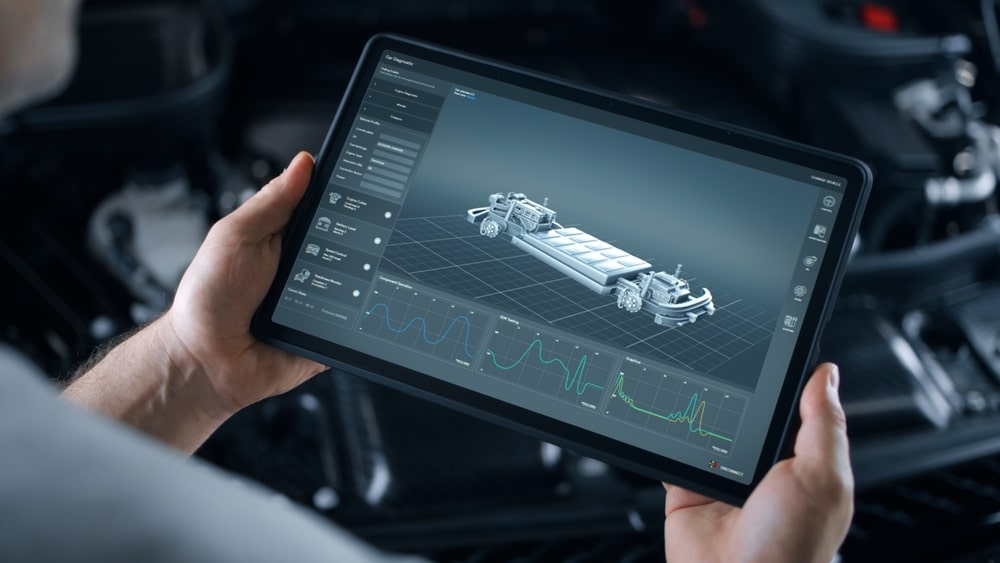
While still in development, V2G technology is particularly promising for fleet depots and workplaces that operate with a large number of vehicles.
With potentially hundreds of vehicles acting as external battery storage, businesses can guarantee that power will still be available in the event of a power cut and can facilitate the storage of renewable energy generated by a facility (e.g., via solar panels).
What does smart charging mean for businesses?
Smart charging can maximize the value you get out of your –often substantial– DC fast charging investment. Load balancing can help guarantee maximum utilization of your DC charging stations without overwhelming your location’s power supply, while simultaneous charging ensures you can charge more vehicles at the same time.
Smart charging for smart businesses
Not all DC charging stations are created equal, and the most suitable one for you varies depending on your needs and situation. We provide a range of charging stations that make the most of smart charging for businesses of all sizes. For a complete list of tech specs and use cases, as well as more information, take a look at our DC charging stations designed for every business looking to electrify its operation.
Related articles

EV charging load management and the importance of cluster load balancing
Electric vehicle (EV) charging stations can add a substantial load onto your building’s power supply, often requiring...
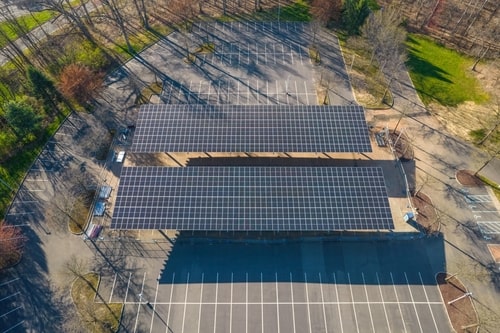
How to design a DC fast charging site
When thinking about installing DC fast charging stations on your site, careful consideration must be given to designing...
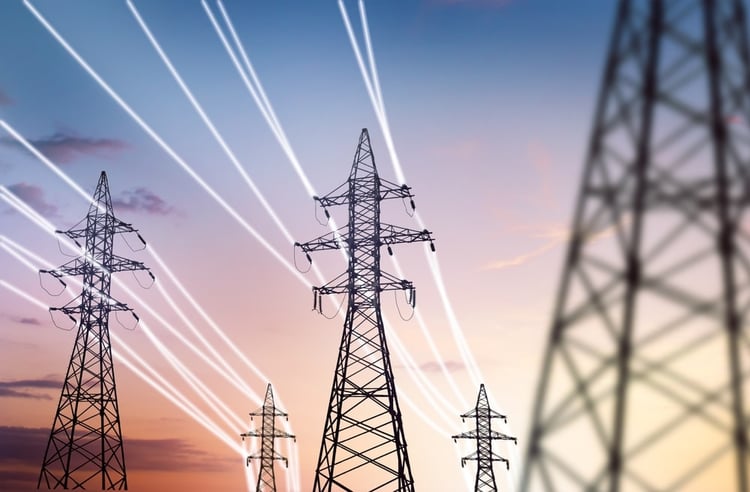
Grid connections for DC fast charging stations explained
The electrical grid is a large and established network delivering electricity from producers to consumers, and...
